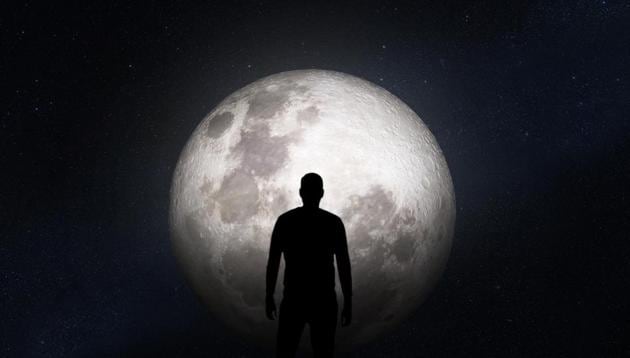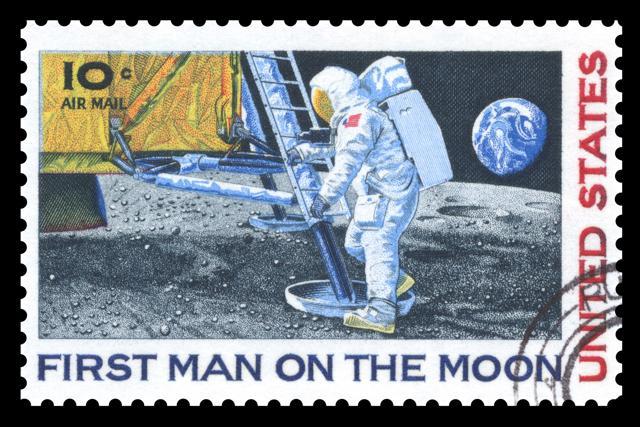Mission moon: The journey of a lifetime
It’s been 50 years since Neil Armstrong and Edwin Aldrin stepped out of Apollo 11 on to the moon’s surface on July 20, 1969. Will we – ordinary men and women – ever be able to travel to this luminous silver orb in the sky? Is this in the realm of scientific possibility?
“At last we discovered a great land in the sky, like a shining island, round and bright, where, coming into a convenient harbour, we went on shore, and soon found it was inhabited. Below us we saw another earth, containing cities, trees, mountains, rivers, seas, &c., which we conjectured was this world which we had left… we now found we were in Madam Luna”

In 18th-century Germany, Baron Munchausen regales his friends, over drinks, with stories of his many adventures. These include his supposed travel to the moon. Long before Neil Armstrong and Edwin (better known as Buzz) Aldrin stepped out of Apollo 11 onto the surface of the moon 50 years ago, on July 20, 1969, the aspiration to travel to this shiny orb in the sky has fired human imagination. A Flight To The Moon by George Fowler, From The Earth To The Moon – and its sequel, Around The Moon – by Jules Verne, The First Men In The Moon by HG Wells, Prelude To Space by Arthur C Clarke… are only a few of the many fictionalised accounts that have, for centuries, reflected this aspiration. In the 1954 Explorers On The Moon, iconic comic book character, Tintin, reaches the moon. While some writers imagined the moon’s surface to be barren and uninhabited, others have written about it being populated with lunar beings. Even when Apollo 11 mission was being planned and worked on, in 1963, Apollo At Go by Jeff Sutton, presented a realistic fictionalised portrayal of the upcoming landing.
The successful landing of Apollo 11 and Neil Armstrong and Buzz Aldrin’s walk on the moon, opened up another exciting possibility – could the common man or non-space-scientist reach for the moon? Literally? What had hitherto been in the realm of speculation was now a reality and we weren’t satisfied with just second-hand information any more. Between 1969 and 1972, the US sent six successful manned missions to the moon, and with each victory, the lunar destination seemed a little closer within the reach of the common man.
It’s only in more recent years, however, that conversations around moon tourism or the commercial sending of a non-space-scientist to the moon, has picked up pace.
In September last year, US entrepreneur Elon Musk’s company Space X – the company “designs, manufactures and launches advanced rockets and spacecraft” – announced that Japanese billionaire Yusaku Maezawa will be the first private passenger to be flown around the moon by them, though he will not land on the satellite. The mission is planned for 2023. At the time, however, BBC had quoted Musk as saying that “It is reliant on a rocket that has not been built yet, and Mr Musk cautioned: ‘It’s not 100% certain we can bring this to flight’.” Meanwhile, Maezawa has started the “Dear Moon” project, as part of which he will take a group of artists with him on his lunar flight.
In February this year, NBC News reported that billionaire Richard Branson will fly into suborbital space on his company’s spaceplane around the time of the 50th anniversary of the Apollo 11 mission (there have been no recent updates on that). The mission statement on Branson’s Virgin Galactic website claims the company is “developing and operating a new generation of space vehicles to open space for everyone”.
Other private players are also looking at space travel. Blue Origin, founded by Amazon CEO Jeff Bezos, envisions a future “where millions of people are living and working in space... In order to preserve Earth, our home, for our grandchildren’s grandchildren, we must go to space to tap its unlimited resources and energy”. The company’s mission, according to its website, is “building a road to space with our reusable launch vehicles”. Another company, Space Adventures, provides “opportunities for private astronauts to fly to and live in space”.

“From a purely technological perspective, it is feasible,” says Mylswamy Annadurai, former director of ISRO’s UR Rao Satellite Centre in Bengaluru. “But as in the case of air travel, countries will have to work together to make it affordable and possible for the common man to avail of this opportunity.”
Annadurai gives an example. “Like airports from which planes take off, here we will need spaceports. Every country may not have the infrastructure to build a spaceport, even if individuals from that country are able to afford space travel. We will need cooperation among countries to make such travel possible.”
One of the biggest challenges at the moment is affordability. Nilesh Vayada, India coordinator of Astronomers Without Borders (AWB), a group of astronomers from around the world, estimates the moon trip will cost “tens of millions of dollars”.
There are other speed breakers. “Passengers will have to be physically fit to be able to undertake the journey,” says Annadurai. “Like we have air hostesses on flights, who remind passengers how to behave in case of an emergency, we will need similar crew for space travel. Also, all passengers will have to be trained to recognise the signs of problems, if any, and know how to deal with them. It’s a longer and riskier trip than usual air travel between continents.”
Both Annadurai and Vayada, however, expect these challenges to be ironed out in the next decade.
But for scientists, the success, when achieved, may trigger mixed feelings. “There’ll be the pride of accomplishment. But I feel there will also be worry and doubt. Till now, space and the moon have been areas of pure research. How will we handle a tourist intrusion,” wonders Annadurai. In December last year, The Guardian reported that while Australian astronaut Andy Thomas “supported what Branson was doing because he was ‘spinning off’ the capability to launch satellites”, he was “less enthusiastic about the idea of taking tourists into orbit”. Annadurai feels setting limits for tourists may be one solution. “Common people shouldn’t be allowed beyond a certain point on the moon. Some parts should be reserved for research only,” he says.
Meanwhile, the Moon Village Association, started by a Vienna-based NGO, aims to bring together governments, industry, academia and the public, for moon explorations and “the development of the Moon Village”. Though the MVA website clarifies that it is not a literal village on the moon, speculation about moon colonisation is not unheard of. The web page of Space X mentions the company’s “ultimate goal” is to “enable people to live on other planets”.
First Base, designed by American businessman Robert Bigelow’s Bigelow Aerospace, can “accommodate four people for a long duration or six people for 120 days on the surface of the moon” according information given on the company’s website. A report published in Forbes in March this year, recalled the company’s plans, as shared a year before, to “launch the first components of a space hotel in 2021” for use by both researchers and space tourists.
The challenge in living on the moon, according to Vayada, is that the “environment on the moon includes no atmosphere, extreme temperatures, radiation, reduced gravity. Designing a habitat for human s will entail life support, recycling systems for air, water and food.”
In The Surprising Adventures Of Baron Munchausen, the Baron ends his many fantastic descriptions of what he saw on the moon with, “if the shadow of a doubt can remain on any person’s mind, I say, let him take a voyage there himself, and then he will know I am a traveller of veracity”. It seems it’s only a matter of time before we, or at least those of us who have the money, will finally be able to do just that.






